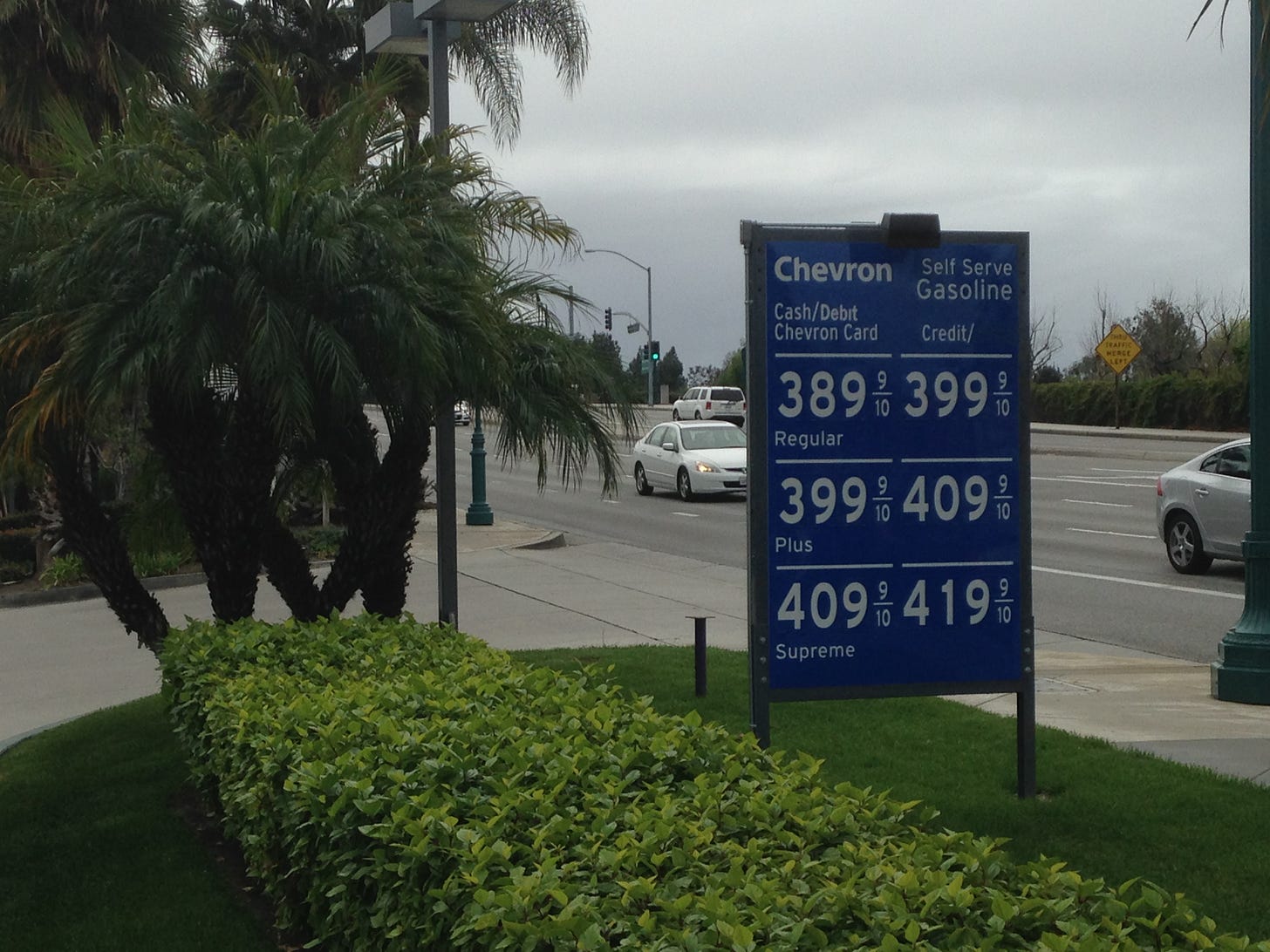National Average Slips Again as Gasoline Inventories Jump
The nation’s average price of gasoline has declined for the second straight week, falling 1.8 cents compared to a week ago and stands at $3.07 per gallon, according to GasBuddy® data compiled from more than 12 million individual price reports covering over 150,000 gas stations across the country. The national average is down 5.2 cents from a month ago and is 32.8 cents per gallon lower than a year ago. The national average price of diesel has decreased 1.7 cents in the last week and stands at $3.448 per gallon.
“Average gas prices declined in nearly all states over the last week as refineries ramped up output and gasoline supplies surged,” said Patrick De Haan, head of petroleum analysis at GasBuddy. “While a few states experienced price cycling — a pattern where prices drop sharply and then spike every couple of weeks — the overall gentle downward trend is typical as summer progresses. If oil prices continue to rise gradually, it could eventually impact gas prices, but for now, we likely won’t see any major shifts at the pump in most areas this week.”
OIL PRICES
Oil prices held mostly steady last week with Brent around $66 and WTI near $64, as markets digested OPEC+’s move to boost output, adding 411,000 bpd in July, amid signs of softening demand. Despite an oversupplied outlook, prices remained resilient thanks to geopolitical risks and improving U.S.-China trade sentiment after recent high-level talks. U.S. crude exports are facing more competition from rising global supply, while looming Senate legislation proposing steep tariffs on Russian energy could shake things up further. Overall, the market’s balancing act continues, with supply growth outpacing demand but geopolitical tensions keeping a floor under prices. In early trade Monday, WTI crude was up 15 cents to $64.73 per barrel, up from $63.64 per barrel last Monday, while Brent crude was up 18 cents to $66.65 per barrel, a gain from last Monday’s $65.44 per barrel start.
“Global oil inventories have risen by 216 million barrels year-to-date, exceeding the five-year average of roughly 83 [million],” said Eric Nuttall, Partner and Senior Portfolio Manager at Ninepoint Partners. “Demand is out of seasonal hide due to the U.S. driving season and Middle East air conditioning requirements; unless there is a politically induced outage, Q4 builds are expected to be very sizeable, erasing the deficit to average levels given the accelerated pace of the return of voluntarily curtailed barrels by OPEC members. We see U.S. shale as having to act as the balancing mechanism requiring a price below $60 WTI to induce necessary declines.”
OIL AND REFINED PRODUCT SUPPLIES
The EIA’s Weekly Petroleum Status Report for the week ending May 30, 2025, showed U.S. oil inventories fell by 4.3 million barrels, and are about 7% below the seasonal average for this time of year, while the SPR rose 500,000 barrels to 401.8 million. Gasoline inventories jumped by 5.2 million barrels and stand 1% below the five-year seasonal average, while distillate inventories rose 4.2 million barrels and are about 16% below the five-year seasonal average. Refinery utilization rose 3.2 percentage points to 93.4%, while implied gasoline demand, EIA’s proxy for retail demand, fell 1,189,000 bpd to 8.263 million barrels per day.
GAS PRICE TRENDS
The most common U.S. gas price encountered by motorists stood at $2.99 per gallon, unchanged from last week, followed by $2.89, $2.79, $3.09, and $2.69, rounding out the top five most common prices.
The median U.S. gas price is $2.94 per gallon, down 1 cent from last week and about 13 cents lower than the national average.
The top 10% of stations in the country average $4.39 per gallon, while the bottom 10% average $2.51 per gallon.
The states with the lowest average prices: Mississippi ($2.60), Oklahoma ($2.63), and Louisiana ($2.68).
The states with the highest average prices: California ($4.63), Hawaii ($4.43), and Washington ($4.33).
Biggest weekly changes: New Mexico (-12.7¢), Oklahoma (-10.0¢), Ohio (+8.9¢), Colorado (-8.8¢), Michigan (+8.6¢)
DIESEL PRICE TRENDS
The most common U.S. diesel price stood at $3.39 per gallon, unchanged from last week, followed by $3.29, $3.49, $2.99, and $3.19, rounding out the top five most common prices.
The median U.S. diesel price is $3.35 per gallon, unchanged from last week and about 10 cents lower than the national average.
Diesel prices at the top 10% of stations in the country average $4.53 per gallon, while the bottom 10% average $2.82 per gallon.
The states with the lowest average diesel prices: Texas ($2.96), Oklahoma ($3.03), and Mississippi ($3.08).
The states with the highest average diesel prices: Hawaii ($5.17), California ($4.97), and Washington ($4.63).
Biggest weekly changes: New Mexico (-10.0¢), Colorado (-8.1¢), Delaware (-7.2¢), Connecticut (-7.1¢), Maryland (-6.1¢)




